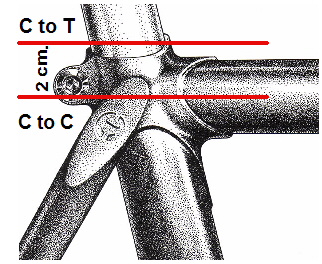Marketing
 Mon, August 19, 2019
Mon, August 19, 2019  David R Ball PhotoMarketing is always a tough nut for the artist.
David R Ball PhotoMarketing is always a tough nut for the artist.
All he wants to do is create, but then there comes a point where he must market what he creates in order to survive and continue creating.
It is tough when you have a product that you know is superior but lose sales because some large corporation has more marketing clout.
This happened many times with me in the early 1980s when customers would be on the brink of buying one of my bikes, then at the last moment opt for a Japanese Nishiki, on Centurion. Both good bicycles of that era but could never compare to a hand-built frame made by an individual craftsman.
The only reason they did this was marketing. These large manufacturers could place full page color ads in Bicycling Magazine. But at $10,000 a pop for a such an ad there was no way I could compete.
Instead I relied on bicycle dealers to sell to a small group of hard-core cyclists who could appreciate the difference between a limited production hand-built frame, and a factory mass produced item. I built a Nationwide network of these dealers by attending the Interbike Trade Show each year.
Each dealer would have bikes in stock that potential customers could test ride. Once a person test rode a Fuso, or other bike I built, and compared it to a production import bike, they could tell by the way it rode, the way it handled, this was a better bike, often for the same amount of money.
These independent bicycle dealers were my sales force, handling all the marketing for me, leaving me to spend my time building frames. For the dealer there was a 15% mark-up on a frame, not a huge amount, but when you add to this the markup on the components. Plus, back in the day, the bike store built the wheels and of course charged labor for the assembly of the bike.
It was a profitable partnership for the dealer and me, one that worked well through the 1980s, until the market changed. By the early 1990s interest switched to Mountain Bikes, which killed the road bike market.
For me to sell direct to the individual customer was a hopeless proposition. It had worked well for me in England though the 1970s, but there was a big difference in the mentality of the customer in the UK.
For a start my UK customers were almost exclusively racing cyclists. Having chosen a framebuilder, they would trust him implicitly. They would spend an hour at the most, getting measured and discussing the order. If they lived more than 75 miles away, the order would probably be sent via mail, or taken over the phone. The customer would order a frame and would most likely buy the components and assemble the bike himself.
The American customer, on the other hand, would drive hundreds of miles across state lines to visit with a framebuilder. Having done that, they would expect to spend the whole day at the shop, hanging out, watching me work, asking all manner of questions, that went way beyond the scope of the actual frame I would build for them. And there was never a gaurentee that an order would be forthcoming.
I think the big difference between the British and American customer is, the UK customer recognizes your skills but treats you as an equal. However, he respects your time and realizes it is valuable.
The American customer also recognizes your skills, but treats you like some kind of celebrity because of it, to the point at times, it is embarrassing. However, he has no respect for your time, and if he is buying your product, he expects your undivided attention that goes way beyond the time it takes to actually create that product.
It is the American way. Money talks, and the customer is King. A philosophy I never quite bought into, and was the reason I ran a strict ‘No Visitor’ policy, and sold my product through bike dealers. If I had it to do over again, I would do the same. One cannot run a profitable framebuilding business if you are spending more time talking about bikes than actually building them.

























